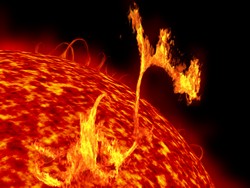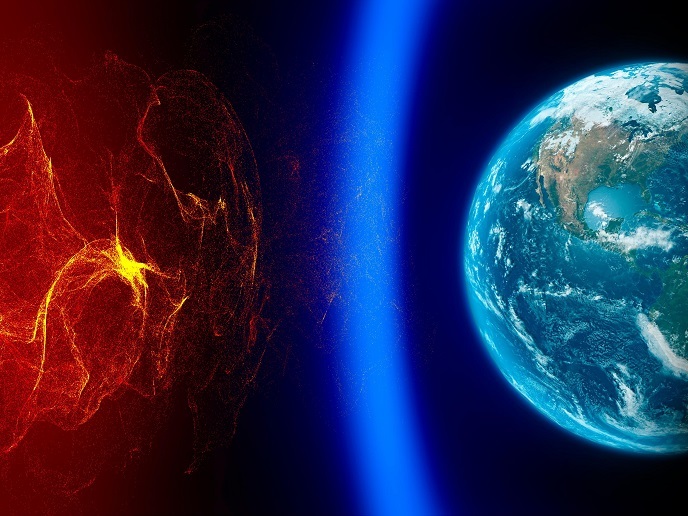Solar flares in unprecedented detail
Solar flares are observed when energy stored in twisted magnetic fields – usually above sunspots – is abruptly released. In just a few minutes, they can heat material in the Sun’s atmosphere, chromosphere and corona to millions of degrees Kelvin and produce a burst of radiation throughout the electromagnetic spectrum. Within the EU-funded project FLARES (Flares throughout the solar atmosphere), scientists obtained the most detailed observations to date of intense solar flares. They had been observed by space telescopes and ground-based observatories, fortuitously focused on the eruption site. In particular, the X-class flare on 29 March 2014 erupted on the right side of the Sun. Interface Region Imaging Spectrograph (IRIS), Solar Dynamics Observatory (SDO) and Reuven Ramaty High Energy Spectroscopic Imager(RHESSI) of the National Aeronautics and Space Administration (NASA) captured this eruption. Furthermore, the Japanese Aerospace Exploration Agency’s (JAXA) Hinode satellite and Richard B. Dunn Solar Telescope at Sacramento Peak in New Mexico also observed the X-class flare. Several other solar telescopes watched the evolution of the flare as it propagated through space. To have a record of an intense flare from so many observatories was unprecedented. Observatories from so many sources and different instruments painted a unique 3D picture of what happens during such a massive eruption on the Sun and its effects on space weather near Earth. Using magnetograms from SDO and Hinode, scientists mapped the magnetic field’s strength and direction change in the active region at the footprints of the flare just before its eruption. They revealed intense magnetic fields moving in opposite directions – a harbinger of a solar flare. IRIS provided the most detailed view of what happens in the chromosphere and transition region through which energy and heat of the flare travelled. The National Oceanic and Atmospheric Administration's (NOAA) Geostationary Operational Environmental Satellite (GOES) detected X-rays emitted. From the data collected, scientists teased a detailed picture of how the flare starts and peaks, findings that were published in high-impact peer-reviewed journals. Coordinated observations of the flare also allowed to make an accurate forecast of the effects on the Earth's space environment, putting observatories around the world on alert. The Sun is currently in a period of low activity, heading towards what is known as a solar minimum when there are only a few to no solar flares. Still, a better understanding of flares is required to predict the effect of solar activity on Earth accurately.







